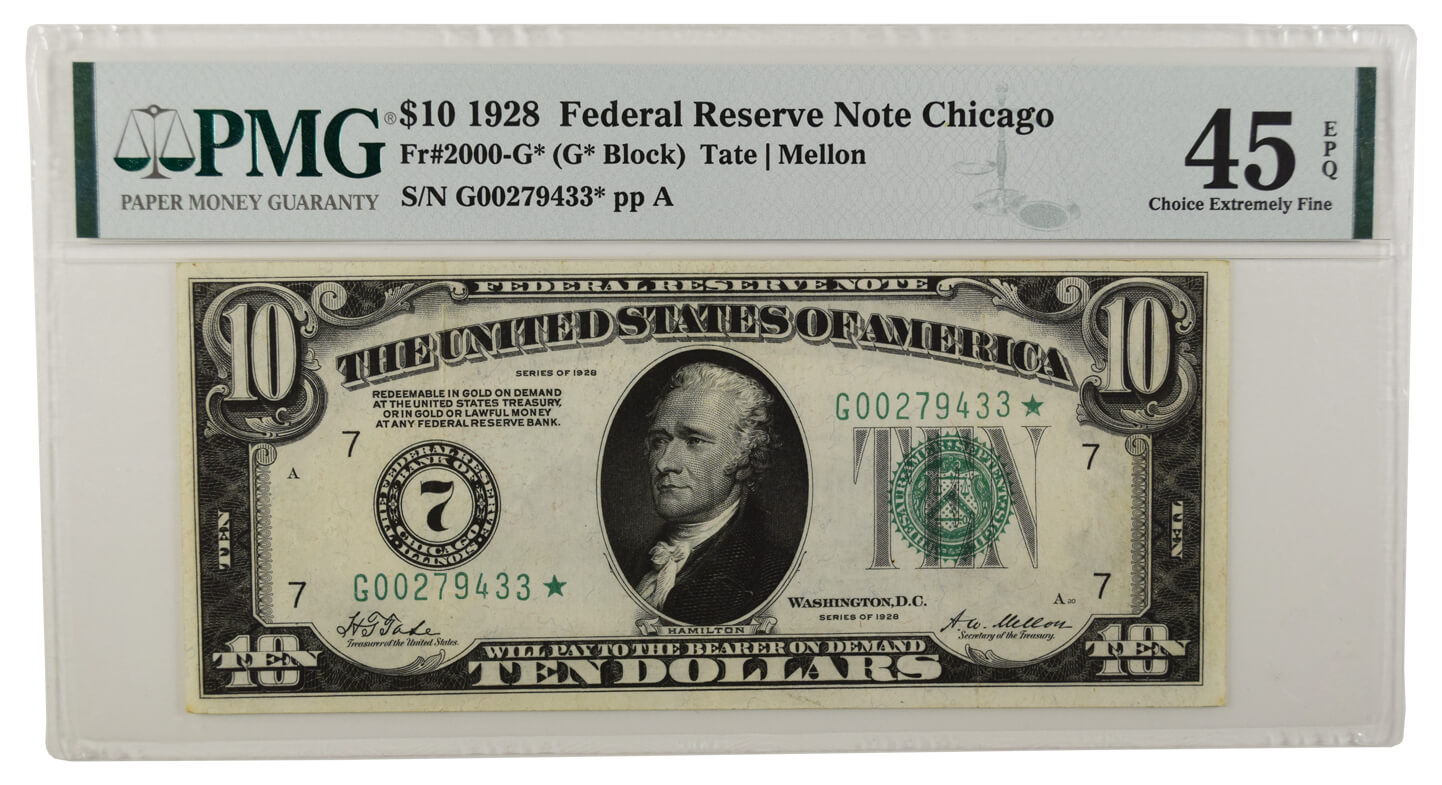The 1928 10 Dollar Bill is an iconic piece of American currency, holding significant value for both collectors and investors. This bill, part of a historical series of U.S. paper money, has an allure due to its unique characteristics and the stories it tells about the country’s economic history. The 1928 ten dollar bill, which features Alexander Hamilton, is more than just a means of exchange—it is a reflection of its era.
Depending on its series, condition, and rarity, the 10 dollar bill from 1928 can be worth a surprising amount today.
Series and Varieties Of The 1928 10 Dollar Bill
The 1928 $10 bill was issued as part of a series of Federal Reserve Notes, and there are different sub-series that make the value of these bills highly variable. The main series include the 1928, 1928A, 1928B, and 1928C, each with its unique characteristics. The specific series and condition of the bill can drastically change its worth.

For example, the 1928 series notes typically range in value from around $30 to $45 in very fine condition. However, in uncirculated condition with a grade of MS 63, these bills can reach prices between $125 and $175.
Bills issued from certain Federal Reserve Banks, such as those from Boston, are more highly valued compared to others from different districts.
The 1928A series is slightly more valuable, with bills in very fine condition often fetching between $45 and $65. Uncirculated bills from the 1928A series can sell for as much as $250 to $325, especially those issued by Federal Reserve Banks in Dallas, Kansas City, and Minneapolis, which are in high demand among collectors.
The Rarity Of The 1928C 10 Dollar Bill
The 1928C series is particularly noteworthy due to its rarity. These bills are valued based on which Federal Reserve Bank issued them. For example, bills issued by the Federal Reserve Banks of Chicago and New York can range from $115 to $150 in very fine condition.
However, when found in uncirculated condition, they can command prices as high as $650 to $750.
The bills from the Cleveland district, however, can be even more valuable, sometimes reaching up to $1,500 in uncirculated condition.
Star Notes: A Rare and Valuable Variant
One of the most exciting aspects of collecting 1928 $10 bills is the presence of star notes. These are replacement notes that the United States Federal Reserve printed to replace bills that were damaged during production.
Star notes are rarer than regular notes, and therefore, they carry a higher value.
A 1928 10 Dollar Bill star note, depending on its series, can be worth significantly more than its regular counterpart. For example, the 1928 series star notes are generally worth between $250 and $350 in very fine condition, and in uncirculated condition, they can reach prices from $2,250 to $2,500.
Star notes from certain Federal Reserve Banks, such as those from Dallas and San Francisco, are particularly sought after and can command even higher prices.
The 1928A star notes are also highly valuable, ranging between $250 and $400 in very fine condition. In uncirculated condition, these bills may sell for around $2,000, especially if issued by certain Federal Reserve Banks like Atlanta, Boston, Dallas, New York, Philadelphia, and San Francisco.
Understanding The Value Of The 1928 10 Dollar Bill
The value of a $10 bill from 1928 depends on several factors, including the series, condition, and rarity of the note. Star notes can substantially increase the value of the bill, as they are rarer and often harder to find in good condition.
Additionally, the issuing Federal Reserve Bank plays a significant role in determining the value. Bills from more prominent districts or those with historical significance are often more sought after by collectors.
In general, a 1928 10 dollar bill in very fine condition will usually be worth around $30 to $65, depending on the series. However, bills in uncirculated condition, with a grade of MS 63, can easily surpass $100 in value.
In rare cases, such as with star notes or bills from specific banks, the value can be much higher.
The Significance Of The 1928 10 Dollar Bill in History
The 1928 $10 bill represents an important era in U.S. currency. It was a time when the dollar had much more purchasing power than it does today. In 1928, $10 was a significant sum, roughly equivalent to $186 in today’s dollars when adjusted for inflation.
The bill is a testament to the economic climate of the time, which saw the country in the midst of the Roaring Twenties, a period marked by economic prosperity.
Despite its historical importance, not all 1928 ten dollar bills are equally valuable. Most bills from this period were in circulation and were used for everyday transactions.
Over time, many of these bills were lost or damaged, reducing their availability.
This scarcity, combined with the historical significance of the currency, makes the 1928 10 dollar bill highly prized among collectors.
What Does A 1928 10 Dollar Bill Look Like?
The design of the 1928 $10 bill is an important aspect of its value. It features a portrait of Alexander Hamilton, one of the founding fathers of the United States.
The reverse side of the bill features the U.S. Treasury building, and the bill itself is marked with the Federal Reserve seal and the signature of the Treasurer of the United States and the Secretary of the Treasury.
The 1928 series notes were unique because they were larger than modern U.S. paper currency, which adds to their collectible appeal. The bills also have distinctive green seals and serial numbers, and the 1928 10 dollar bill is one of the last to be issued before the switch to smaller-sized notes.
The Grading System: Understanding Condition
The condition of a 1928 $10 bill is a crucial factor in determining its value. Bills are graded on a scale from “poor” to “uncirculated,” with various intermediate categories, such as very fine and choice uncirculated.
For collectors, the grading of a bill is one of the most important aspects to consider.
A very fine 1928 $10 bill will show signs of circulation, including light creases, folds, or smudges. However, it will still be relatively crisp.
An MS 63 grade, which stands for choice uncirculated, indicates that the bill is essentially perfect, showing no signs of wear or circulation.
Conclusion
The 1928 10 Dollar Bill is not only a fascinating piece of U.S. currency but also a valuable collectible. The value of these bills can range significantly depending on the series, condition, and rarity of the note, with some star notes or bills from specific Federal Reserve Banks being worth much more than others.
A collector or an investor, understanding the historical significance and nuances of the 1928 $10 bill is essential to appreciating its value.
For those looking to add a piece of history to their collection, the 1928 10 Dollar Bill presents an exciting opportunity.
As you consider the value of your own collection, remember that the condition, series, and unique characteristics of each bill are key to understanding its true worth. It’s clear that the 1928 10 dollar bill is much more than just currency—it’s a piece of history that continues to hold great value.

